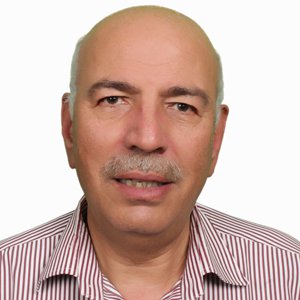حكمت هلال
- طبيعة العمل
- أكاديمي
- المهنة
- استاذ
- البريد الإلكتروني
- [email protected]
- هاتف المكتب
- (+970) 9 2345113 Ext. 882385


حكمت هلال
- طبيعة العمل
- أكاديمي
- المهنة
- استاذ
- البريد الإلكتروني
- [email protected]
- هاتف المكتب
- (+970) 9 2345113 Ext. 882385
- Course Title
- تكنولوجيا النانو للطاقة
- Course Number
- 1/463864
- Instructor Name
- حكمت هلال
- Contact Information
- [email protected]
- Semester(s) and academic year(s)
- First Semester 2021
- Compulsory / Elective
- Elective
The PhD level course starts with basic concepts of materials, nanomaterials and nanotechnology. In depth understanding of the nano-phenomenon is included, with no assumed pre-knowledge. In depth understanding the special features for nanomaterials, their building blocks, top-down and bottom-up preparations, characterizations and various applications are included. Applications of nanomaterials in various electronic systems, with renewable energy domains being the core subject of the course. Basic concepts of conventional (1st generation) bulk p-n homojunctions, heterojunctions and tandem photovoltaic cells are included, with their features and shortcomings. Nano-scale thin film solar cells are then heavily involved, showing 2nd and 3rd generations. Latest developments in the field, including dye sensitized solar cells and organic solar cells are also studied. Methods to measure solar cell performance (short circuit photocurrent JSC, open circuit potential VOC, fill factor FF, photoconversion efficiency PCE, incident photon to current efficiency IPCE, and cell stability) are studied. Using nanomaterials to convert solar light into chemical energy (i.e. water-to-hydrogen and CO2 activation) and in environmental cleanup is also studied. In short, role of nanotechnology in power production and power storage, is highlighted, with the approach from-research-to-market.
The goal of this course is multi-fold. Familiarity with basic concepts of solid state, conductivity, p-n junctions and other basic aspects of semiconductor is the starting up. Light-to-electricity conversion processes in conventional photovoltaic systems will be targeted, together with optimizing cell performance. Applications of nanotechnology in power production (PV, thin films, DSSCs, hydrogen production), power storage (batteries, hydrogen storage) and environmental preservation (contaminant removal, CO2 conversion) will all be studied (lab, R&D and commercial scales). The learner will then be able to find out new areas of research in the field where he/she will be able to investigate, either in simulation or experimentally, and write up a feasible proposal in the area.
After completing the course, the learner will be able to:
- Survey basic scientific foundations of conventional photovoltaic devices bade on p-n junctions
- Describe various cell parameters, and strategies to overcome challenges and methods to enhance solar cell performance, together with new trends in nanotechnology (the nano-phenomenon, special features, nano-films, p-n junctions)
- Investigate light-to-power conversion occurs in nano-film based solar cells and determine solar cell performance (VOC, JSC, FF, PCE, IPCE and stability)
- Describe role of nanotechnology in power production and power storage systems.
Use literature to write down feasible research proposals related to nano-technology applications in renewable energy (thin films, power production, hydrogen production & storage, CO2 conversions, environmental cleanup, DSSC development) at lab or commercial levels.
Bradley Falham, Materials Chemistry, 2nd Edition, Springer, 2008
Harry O. Finklea, Semiconductor Electrodes, Elsevier, 1982
Various
This is the core source for the course, where journal articles are heavily used
| Activity | Percent (%) |
|---|---|
| Midterm Exam | 30% |
| Final Exam | 30% |
| Power point presentations | 20% |
| Submitted research proposal | 20% |